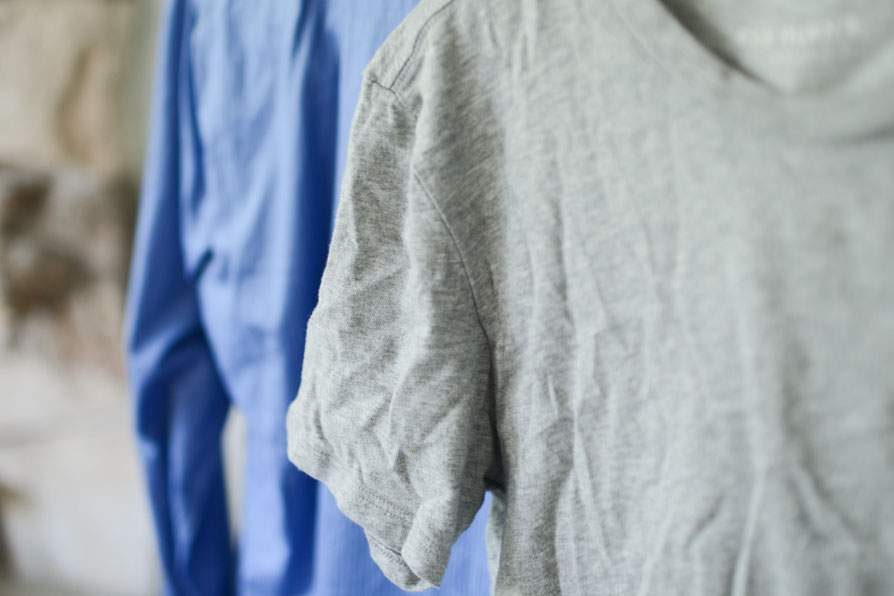
A cool, dry cotton fiber springs back after being bent. A warm, damp cotton fiber doesn't. Moisture and temperature make the difference.
First, the role of temperature.
Dry Fibers
Cotton fibers, like many other materials, spring back as long as they're cooler than a certain transition temperature, the temperature at which the fiber loses its springy quality. This temperature of transition from springy to not-springy is a characteristic of the material.
For dry cotton, this transition temperature is about 120 degrees Fahrenheit. Dry cotton stays springy below 120 degrees; above 120 degrees, it holds whatever shape it's bent into.
Moisture
Now, the role of moisture. Water, absorbed into cotton fibers, lowers this transition temperature. In other words, damp cotton loses its springiness at a lower temperature than dry cotton.
Suppose the weather is warm and you're wearing a cotton shirt or blouse. You sit in a chair, lean back.
Leaning, Standing
Perspiration lowers the transition temperature of the fabric to about 70 degrees Fahrenheit. Your skin is warmer than that, so heat from your skin is sufficient to change the cotton into its non-springy state. Your weight then presses the cotton into a new, wrinkled shape.
You stand up; the cotton cools off, dries out, and resumes its springy state this time in a wrinkled shape.
The cotton holds its wrinkled shape till you iron it flat again, probably with a steam iron.
Steam lowers the transition temperature of the cotton to a point much cooler than the temperature of the iron. The iron can then press the fabric into a new, flat shape.
Sources And Further Reading:
- F.L. Wiseman, Chemistry in the Modern World: Concepts and Applications (1985).
- "Glass transition" in McGraw-Hill Encyclopedia of Science and Technology, 6th ed. (New York, 1987).









